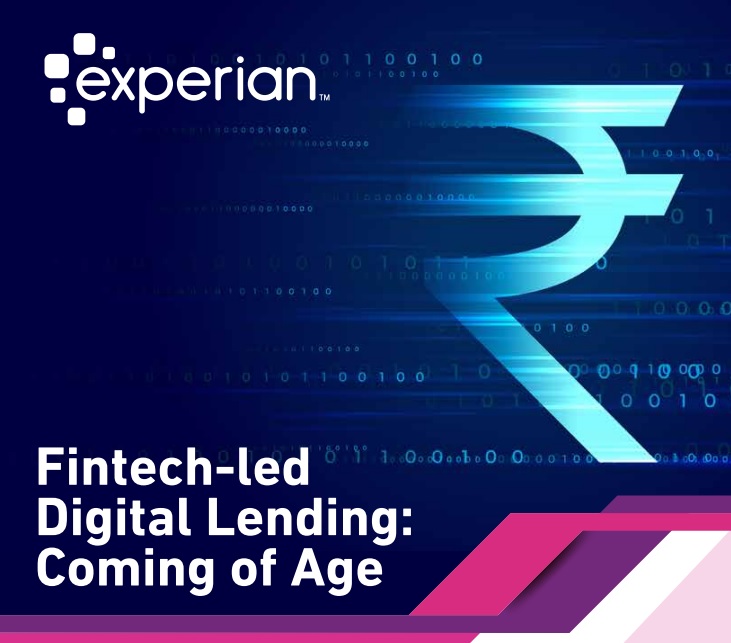The White Paper of ECICI covers the impact created by fintechs, pertinent issues & outlook 2030

FinTech BizNews Service
Mumbai, November 20, 2023: Recently, RBI tightened rules for personal loans and credit cards. The new norms will make personal loans and credit cards costlier and may curb growth in these categories. Fintech might be worst hit after RBIs’ measures on unsecured credit, believes Saikrishnan Srinivasan, MD, ECICI (Experian Credit Information Company of India). There are a number of interesting issues dealt in with in a White Paper brought out by Experian Credit Information Company of India. The white paper is titled as – Fintech-led Digital Lending: Coming of Age. It covers the impact created by fintechs, pertinent issues & outlook 2030.
In the Foreword Saikrishnan Srinivasan, MD, Experian Credit Information Company of India, observes: “Fintechs have been instrumental in driving digital lending in India. The impact of enhancing process efficiency and the customer experience has scaled up digital lending in India. However, there is another important aspect to digital lending that makes the role of fintech extremely critical. It is on the agenda for increasing credit coverage and thereby enhancing financial inclusion. We believe this white paper can set the foundation towards addressing this gap. The report titled "Fintech-Led Digital Lending: Coming of Age,” which focuses on the role of fintech-led digital lending in reducing the credit gap. Insights from the bureau provide an empirical foundation that will have numerous takeaways to aid digital lending. This white paper also delves into the transformative changes ushered in by the fintech industry in the way credit is delivered through digital innovations. The white paper discusses how digital lending has been instrumental in providing a superior experience by reducing turnaround time for credit applications. Fintech has not just addressed the credit gap but also helped reduce geographical disparities in credit supply. The white paper is also forward-looking, as it provides key predictions on the digital lending landscape for 2030. Digital lending is an evolving space and provides tremendous opportunity for fintech to make further inroads.”
A decade ago, not many of us would have envisaged how fintechs would change the credit landscape through digital innovations. Although the share of fintech in the overall lending pie is still small and concentrated towards bite sized unsecured lending, the promise it holds for the future is immense. Fintech-led digital lending is the fastest-growing segment today. The disruptions created by fintech by providing a superior customer experience with a reduced cost of acquisition, a frictionless customer journey, and instant decisioning have revolutionised digital lending in India. The larger impact is in terms of addressing the credit gap and making India more credit-inclusive. This report, while taking a deep dive into these aspects, has the following key takeaways: 1. Fintechs, through their unique operating model and innovative underwriting processes, have helped to bring a large population under the credit umbrella. A large segment has overcome their credit hesitancy and taken credit, especially for their consumption needs. Not only are the fintechs sourcing more from the New To Credit (NTC) segment, but they are also addressing geographical disparities in credit supply (based on personal loan disbursals). In business loan, MSME borrowers (especially Bureau score < 700) are catered to more by fintechs compared to other lenders. Fintechs have even motivated traditional players to accelerate their digital transformation journey. Co-lending arrangements are a testimony to how the innovations from fintechs are valued by large, traditional players. In the recent years digital lending has seen a rapid growth but some of the post lending procedures which require physical eorts, such as collection have not matured that rapidly. Due to this Fintech see an increased Delinquency rate and Lower rollback. 2. We find new age fintech players to be largely focused on personal loans (< Rs. 50,000 ticket size including Buy Now Pay Later (BNPL) sub-segment), business loans (< Rs. 5 lacs sanction amount) and supply chain financing. In order to further deepen their share in the overall digital lending market, they will need to expand into asset-backed product segments, which are currently dominated by traditional players. To enable this, digitisation of land records and properties, field verification of borrower authenticity, and collection digitisation are areas that need investment. Organisations willing to make these investments today can enjoy the benefits of being an early mover in the future. 3. Gen Z and Millennials are digital natives and hence have a natural proclivity for digital purchases. It is no surprise that fintechs have greater traction among Gen Z and Millennials. The share of these digital natives in the addressable market will increase over the next decade. This can put fintechs in an advantageous position. Fintechs need to invest in enablers and accelerators such as new data partnerships, leverage analytics to underwrite on New To Credit (NTC) and Thin File Customers, focus on cybersecurity, and invest in regulatory compliance measures. With all these foundations in place, the next decade would be transformational not just for fintechs but also for the larger credit ecosystem in India.
In the Foreword Siddharth Mahanot, Chairperson – Knowledge committee, DLAI, indicates: “The
Whitepaper explores how fintech-driven digital lending has helped close the credit gap and how it has fundamentally altered how credit is provided through technological advancements. This paper offers an empirical basis and bureau insights that will have several takeaways to support digital financing. It's amazing to note how fintechs have lessened geographical dierences in credit as well as the credit gap. The research also makes important projections regarding the future of digital financing through 2030. Experian and DLAI's vision is centred on financial inclusion, and this report represents our dedication to achieving it. We are certain that this whitepaper will be a useful tool for all participants in the ecosystem of digital lending.”